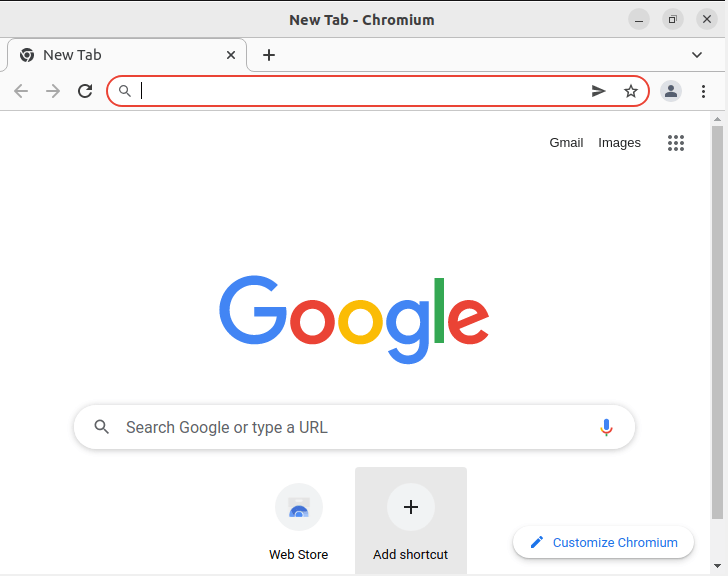How To Install Chromium on Linux Mint 22

In the ever-evolving landscape of web browsers, Chromium stands out as a powerful, open-source alternative that offers speed, security, and flexibility. For Linux Mint 22 users, installing Chromium can significantly enhance their browsing experience while maintaining the principles of open-source software. This comprehensive guide will walk you through various methods to install Chromium on Linux Mint 22, ensuring you have access to this versatile browser tailored for the Linux environment.
What is Chromium?
Chromium is the open-source project that forms the foundation of Google Chrome and many other browsers. It’s a fully functional browser on its own, offering most of the features found in Chrome without the proprietary elements added by Google. Key differences include:
- Open-source nature, allowing for community contributions and audits
- Lack of built-in Flash player and proprietary codecs
- No automatic updates (on most systems)
- Absence of Google-specific features like account synchronization
For Linux users, Chromium offers several benefits:
- Better integration with open-source principles
- Increased privacy due to the absence of Google’s tracking features
- Compatibility with a wide range of Linux distributions
- Access to cutting-edge web technologies and standards
Prerequisites
Before proceeding with the installation, ensure you have the following:
- A working installation of Linux Mint 22 on your system
- Access to the terminal (you can open it by pressing Ctrl+Alt+T)
- Sudo privileges to execute commands with elevated permissions
- A stable internet connection for downloading packages
With these prerequisites in place, you’re ready to explore the different methods of installing Chromium on your Linux Mint 22 system.
Method 1: Installing Chromium via Software Manager
The Software Manager is Linux Mint’s graphical package management tool, offering a user-friendly way to install applications. Here’s how to use it to install Chromium:
Step 1: Open Software Manager
Click on the menu button in the bottom-left corner of your screen and search for “Software Manager”. Click on the icon to open it.
Step 2: Search for Chromium
In the Software Manager’s search bar, type “Chromium” and press Enter. You should see Chromium Browser in the search results.
Step 3: Install Chromium
Click on the Chromium Browser entry, then click the “Install” button. You may be prompted to enter your password to authorize the installation.
Step 4: Verify Installation
Once the installation is complete, you can find Chromium in your applications menu or launch it from the terminal by typing:
chromium-browserIf Chromium launches successfully, you’ve completed the installation via Software Manager.
Method 2: Installing Chromium via Terminal
For users who prefer command-line operations or need more control over the installation process, the terminal method is an excellent option. Follow these steps:
Step 1: Update Package Lists
Open your terminal and run the following command to ensure your package lists are up to date:
sudo apt updateStep 2: Install Chromium
Once your package lists are updated, install Chromium using the apt package manager:
sudo apt install chromium-browserThis command will download and install Chromium along with any necessary dependencies.
Step 3: Verify Installation
After the installation completes, verify that Chromium has been installed correctly by checking its version:
chromium-browser --versionIf you see a version number, Chromium has been successfully installed.
Troubleshooting Common Issues
If you encounter any issues during the terminal installation, try the following:
- Ensure your system is fully updated:
sudo apt upgrade - If you get a “package not found” error, try adding the universe repository:
sudo add-apt-repository universe - Clear the apt cache and try again:
sudo apt clean && sudo apt update
Method 3: Installing Chromium via Flatpak
Flatpak is a universal package management system that allows for easy installation of applications across different Linux distributions. Here’s how to use Flatpak to install Chromium:
Step 1: Install Flatpak
If Flatpak is not already installed on your system, install it using the following command:
sudo apt install flatpakStep 2: Add Flathub Repository
Add the Flathub repository, which hosts a wide variety of Flatpak applications:
flatpak remote-add --if-not-exists flathub https://flathub.org/repo/flathub.flatpakrepoStep 3: Install Chromium using Flatpak
Now, install Chromium using the following Flatpak command:
flatpak install flathub org.chromium.ChromiumStep 4: Verify Installation
Launch Chromium using the following command:
flatpak run org.chromium.ChromiumIf Chromium launches successfully, you’ve completed the Flatpak installation.

Configuring Chromium
After installing Chromium, you’ll want to configure it to suit your needs:
Setting up User Profile
When you first launch Chromium, you’ll be prompted to set up a user profile. This allows you to customize your browsing experience and sync your data if desired.
Importing Bookmarks and Settings
If you’re switching from another browser, you can import your bookmarks and settings:
- Click on the three-dot menu in the top-right corner
- Go to “Bookmarks” > “Import bookmarks and settings”
- Select your previous browser and choose what data to import
Customizing Chromium Settings
Explore Chromium’s settings to customize your browsing experience:
- Click on the three-dot menu > “Settings”
- Adjust privacy and security settings according to your preferences
- Configure default search engine, startup behavior, and appearance
Chromium Extensions and Themes
Enhance your Chromium experience with extensions and themes:
Installing Extensions
- Visit the Chrome Web Store (compatible with Chromium)
- Browse or search for desired extensions
- Click “Add to Chrome” to install
Managing Extensions
To manage your installed extensions:
- Click the three-dot menu > “More tools” > “Extensions”
- Enable, disable, or remove extensions as needed
Applying and Customizing Themes
Personalize Chromium’s appearance:
- Visit the Chrome Web Store’s Themes section
- Choose a theme and click “Add to Chrome”
- To revert to the default theme, go to Settings > Appearance > Reset to default theme
Updating Chromium
Keeping Chromium updated is crucial for security and performance:
Automatic Updates
If installed via Software Manager or apt, Chromium should update automatically with your system updates.
Manual Updates via Software Manager
- Open Software Manager
- Go to “Edit” > “Refresh the list of packages”
- If an update is available, it will be listed under “Updates”
Updating via Terminal
To update Chromium manually via terminal:
sudo apt update
sudo apt upgrade chromium-browserTroubleshooting Common Issues
Here are solutions to some common Chromium issues:
Chromium Not Launching
- Try launching from the terminal to see error messages
- Check for conflicting processes:
ps aux | grep chromium - Rename the Chromium config folder:
mv ~/.config/chromium ~/.config/chromium_old
Slow Performance
- Clear browser cache and cookies
- Disable unnecessary extensions
- Check system resources using the top command
Plugin or Extension Conflicts
- Launch Chromium in safe mode:
chromium-browser --disable-extensions - Gradually enable extensions to identify the problematic one
- Update all extensions to their latest versions
Congratulations! You have successfully installed Chromium. Thanks for using this tutorial for installing the latest version of Chromium browser on the Linux Mint system. For additional help or useful information, we recommend you check the official Chromium website.